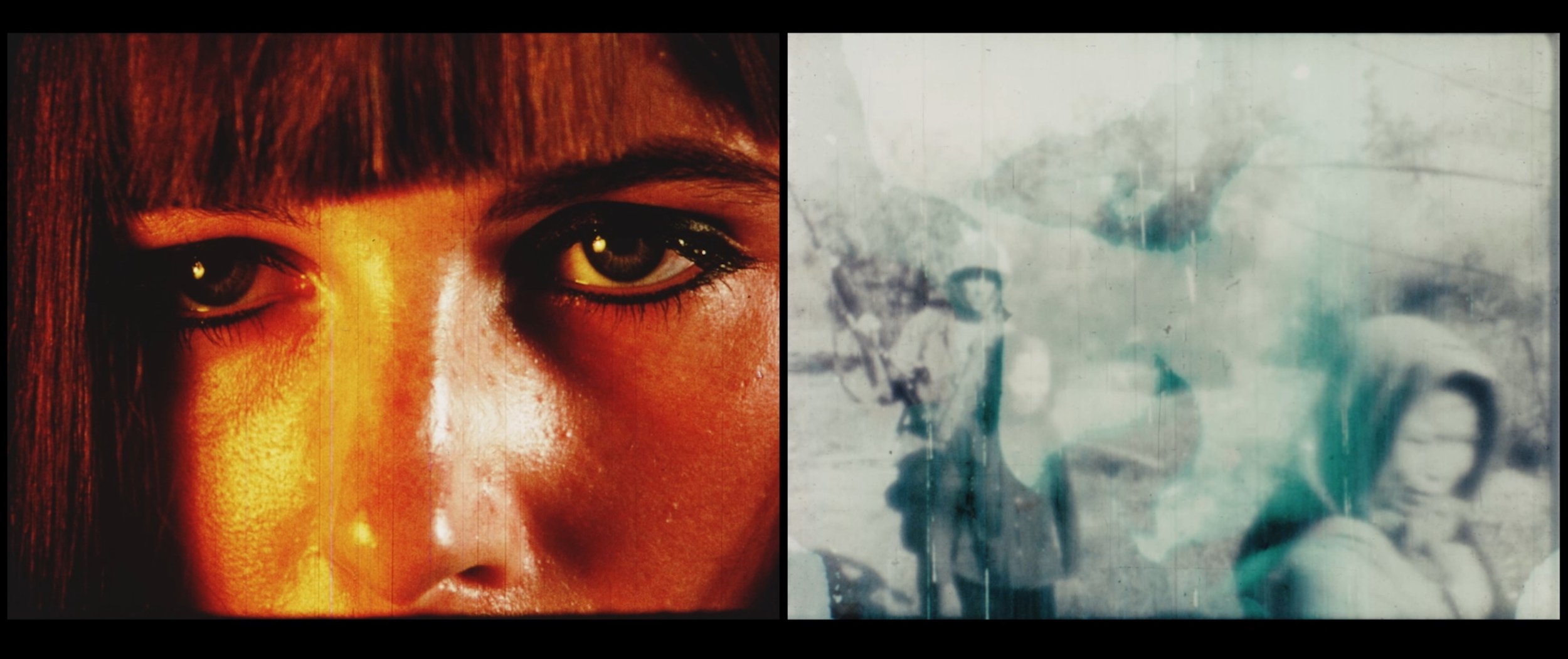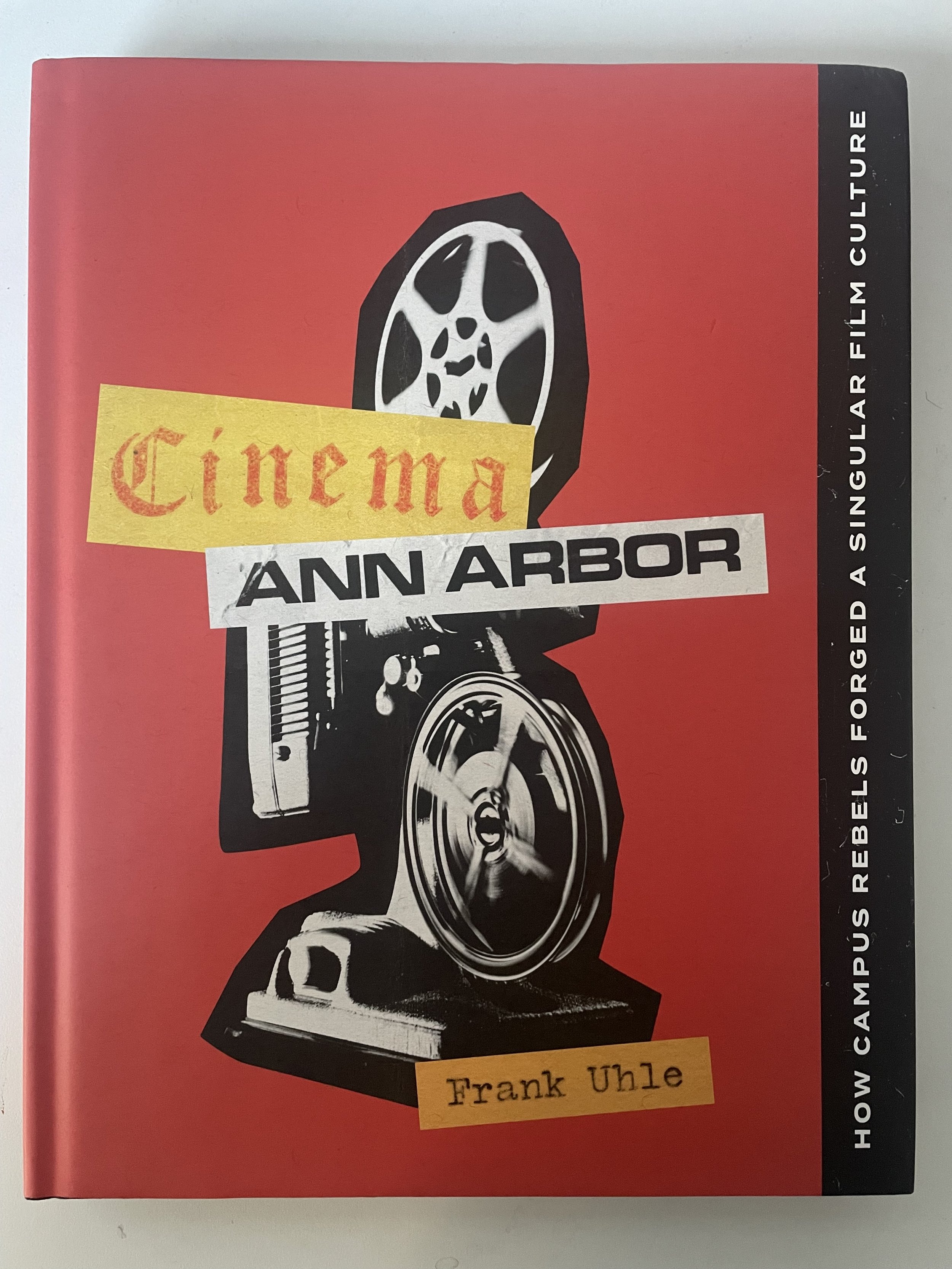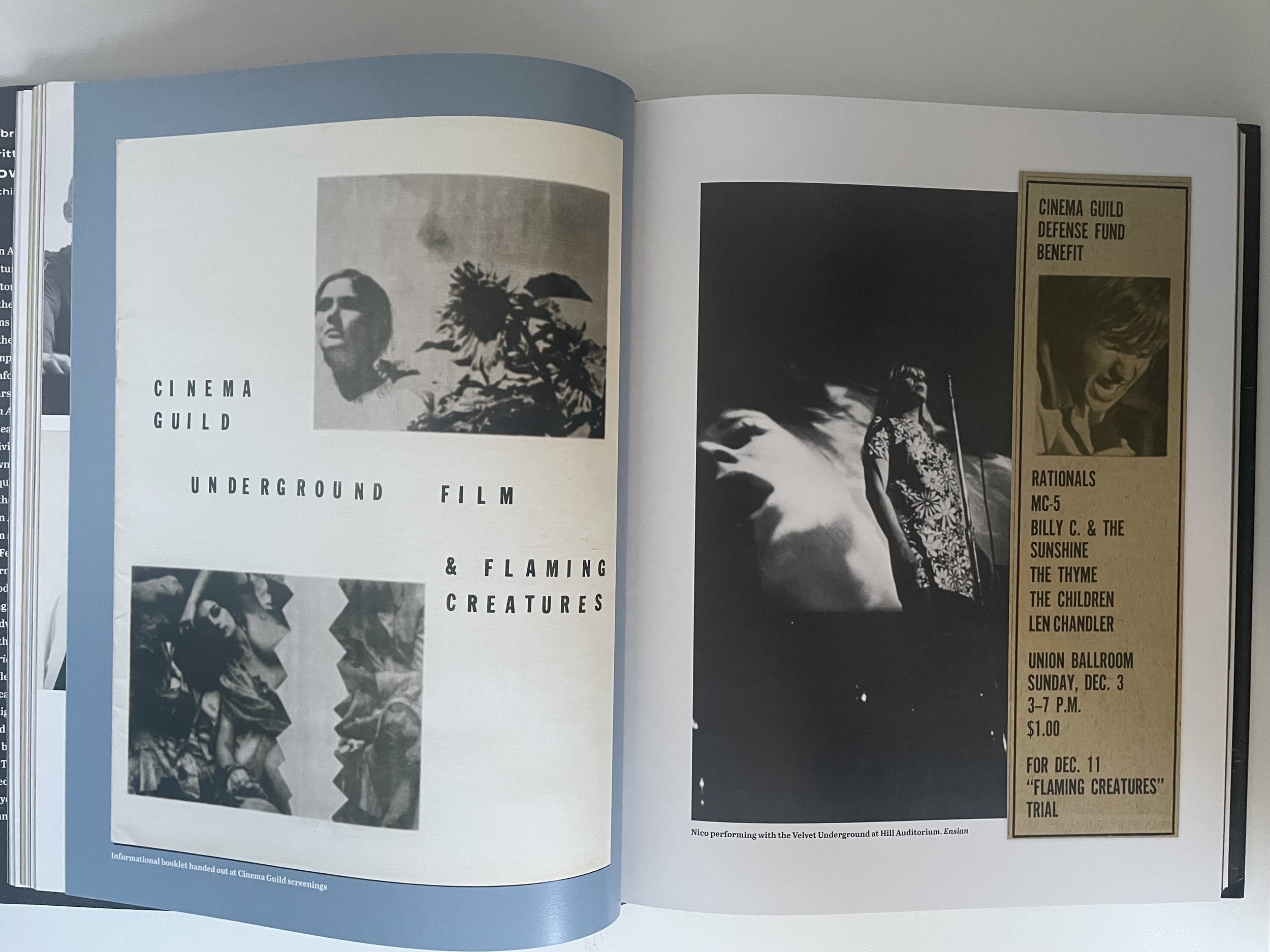Inspired by Frank Uhle’s history of Michigan’s campus film societies, Cinema Ann Arbor (2023), I went browsing in the pages of The Michigan Daily. It’s a great resource for anyone with an interest in many of the topics this blog gets obsessed with [HERE] and it’s guaranteed to give up more than a few unexpected delights. A search for the ‘Velvet Underground’ produced among many things an advert for John Hofsess’ Black Zero: screened on October 17–18, 1968 as part of the ‘Underground at the Fifth Forum – Flicks & Jams’ programme – ‘poetry by Leonard Cohen and music by Velvet Underground’ was used to elevate the film’s attraction (and my interest).
Canadian filmmaker Hofsess and his kaleidoscopic experimental film were new to me.
Black Zero was described in the advert’s blurb as ‘an underground feature in color which demonstrates that split-screen dual projection can be used more creatively than in Chelsea Girls’. Also included were three lines of press hype: ‘A masterpiece! The finest experimental film in two generations – Boston Avatar. ‘This 1st prize winner is without question a sexual art’ – Vancouver Sun. ‘Filled with indescribable terrors and beauties! – London Free Press
I went looking for those indescribable terrors and beauties . . . I didn’t find an on-line stream but there are enticing extracts, with critical commentary, that are being used to promote a recent blu-ray release of Hofsess’ small catalogue of film works [HERE]. Palace of Pleasure features and pairs, as intended by Hofsess, Black Zero with the earlier Redpath 25. The original soundtrack is provided by The Gass Company, another unknown, but they have Reed and Morrison’s guitar sound down pat, best heard in Redpath 25. In Black Zero, their instrumental sections feature a Cale-esque viola drone that seamlessly segues into the real thing with the VU’s ‘European Son’ followed by ‘I’m Waiting For The Man’. Hofsess had a good ear.
When his film was screened in Los Angeles in January 1968 it was billed with Ron Nameth’s Velvet Underground: Exploding Plastic Inevitable, which cemented a link with Warhol. Palace of Pleasure, however, is more than that relationship — it is a lexicon of contemporary experimental cinema; equally infused with Jack Smith’s Flaming Creatures, Stan Brakhage’s abstracts and Kenneth Anger’s oeuvre. Such a lineage should demand that the film be better known, but I’ve failed to find anything in the key histories of the avant-garde. Maybe Jonas Mekas and his peers didn’t take to Hofsess, finding him too derivative. But if cinephiles have ignored or remained ignorant of the film then rock’s cultists should surely have found their way to make the work more visible, especially as The Velvets are not the only contemporary group featured; their two tracks are preceded by two from The Who’s first LP, ‘The Ox’ and ‘My Generation’, which are played in their entirety across Redpath 25.
Bringing together The Who and the Velvet Underground through the filter of Pop Art is not a difficult move to make – see A Band With Built-In Hate – both Cale and Reed have talked about The Who’s influence on their artful dissonance and songwriting, but to see the two groups tethered to each other in an experimental film is suggestive of a more complex set of aesthetic interconnections, less a posthumous theoretical construct than the actual fact of the matter. You can find numerous historical intimations of a pop/art conversation but none, I think, quite so unmediated as found in Palace of Pleasure. Here, at least, Hofsess’ film is entirely unique.
Redpath 25 is the more overtly ‘Pop’ of the two films in its use of a familiar iconography that in one screen focuses on a young woman’s face. Lit by oversaturated red filter, her image strikes a contrast with the monochrome of the Vietnam war actualities projected in the right-hand screen. But, unlike pop art male fantasies that used the objectified figure of a young women to explore cultures of consumption, the fantasia on display here is one of female desire – the woman picks and cuts away at a sheet of silver foil to find packaged behind the film her ideal male lover. Quick cuts to images of male genitals and a view of her fellating the man follow. Meanwhile, masculine fantasies of death and destruction play out on the other screen.
The sonic riptide of The Who’s ‘The Ox’ provides a noisy urgency that tugs away at the passive slow burn of the otherwise inchoate death-obsessed imagery. ‘My Generation’ continues the onslaught but also comments on the film frames that follow of white weddings (and marriages that end in court) – Townshend’s mid-sixties bete noir of young marrieds here made manifest. Leonard Cohen’s poetry carries even more of the thematic weight. Black Zero, with the VU, continues the theme of emotional discord over images of a marital bed occupied by a couple who become distracted from their love making, disengaged from one another, when a second man appears; perhaps the one the woman (and Lou Reed) had been waiting forever to arrive?
Los Angeles Free Press (January 5, 1968)
Los Angeles Free Press (June 7, 1968)
“On the same programme will be John Hofsess’ dual-screen Palace of Pleasure and Ben Van Meter’s outrageous Acid Camp” The latter another film I should probably seek out . . .













